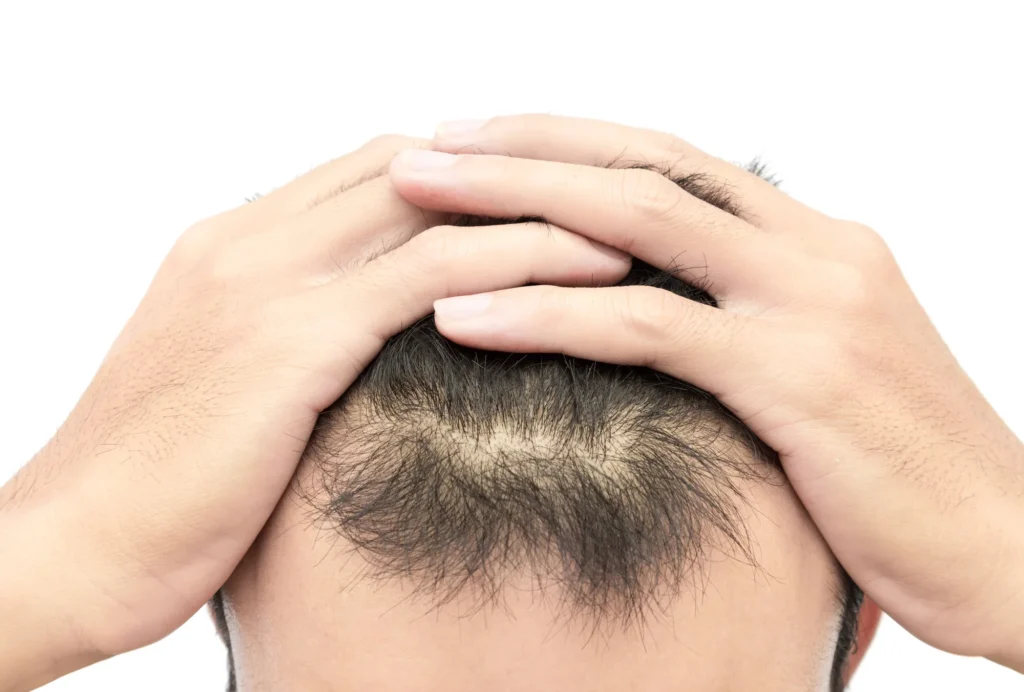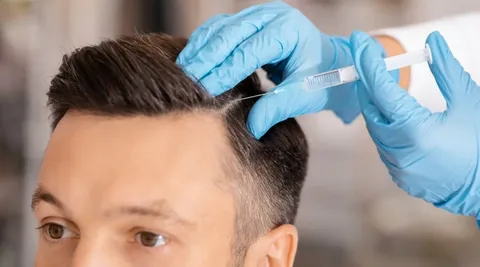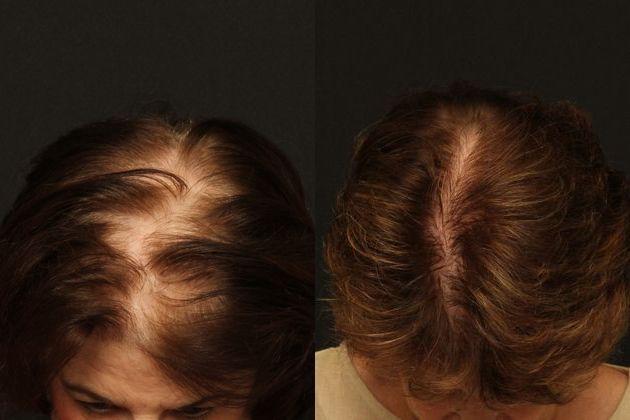Noticing your hairline slowly creeping back? You’re not alone. A receding hairline is a common early sign of hair loss, and the good news is—it’s not always irreversible.
In this guide on how to stop a receding hairline, you’ll discover medically-proven treatments, lifestyle changes, and expert tips that can help slow down or even reverse hairline recession.
Whether you’re just noticing the signs or have tried everything without success, this article offers actionable, trustworthy solutions backed by specialists.
Understanding a Receding Hairline
What Is a Receding Hairline?
A receding hairline refers to gradual hair loss at the temples and forehead. It typically starts as a subtle “M-shaped” pattern and progresses over time.

While more common in men, women can experience it too, often as a general thinning rather than a sharp recession.
Common Causes
Several factors contribute to a receding hairline:
- Genetics: The most common cause. If your parents or grandparents had hair loss, you’re more likely to experience it.
- Hormonal Imbalances: Elevated levels of dihydrotestosterone (DHT) shrink hair follicles over time.
- Lifestyle Habits: Poor nutrition, chronic stress, tight hairstyles, and smoking all accelerate hair loss.
- Medical Conditions: Autoimmune disorders, thyroid disease, and certain medications may also play a role.
Proven Treatments to Halt and Reverse Hairline Recession
FDA-Approved Medications
- Minoxidil (Rogaine): A topical treatment that increases blood flow to the scalp and revitalizes hair follicles. Best for early-stage recession.
- Finasteride (Propecia): An oral prescription drug that blocks DHT production, helping slow hair loss and promote regrowth in some cases.
Pro Tip: Always consult with a dermatologist before starting any medication to evaluate potential side effects.
Advanced Therapies
- Platelet-Rich Plasma (PRP) Therapy: A procedure using your blood plasma to stimulate dormant follicles. Often combined with microneedling for better results.
- Low-Level Laser Therapy (LLLT): Non-invasive light therapy shown to increase hair density over time.

Surgical Options
- Hair Transplant Surgery: Techniques like FUE (Follicular Unit Extraction) transplant healthy follicles from the back of the scalp to the receding areas.
- Hairline-Lowering Surgery: A cosmetic procedure ideal for those with a naturally high hairline, not related to hair loss.
Natural and Lifestyle-Based Approaches
Nutritional Support
Nutrition plays a crucial role in hair health. Consider adding the following:
- Biotin, Vitamin D, Zinc, and Iron
- Leafy greens, eggs, fatty fish, and nuts
[Image Suggestion: Chart showing vitamins for hair growth]
Scalp Care
- Scalp Massage: Stimulates circulation and helps nutrient delivery to follicles.
- Use gentle, sulfate-free shampoos to avoid irritation.
Stress Management
Chronic stress increases cortisol, which can accelerate hair shedding. Try:
- Mindfulness or meditation
- Regular physical activity
- Cognitive behavioral therapy (CBT) is used if stress is long-term or severe
Common Mistakes to Avoid
Harmful Hair Practices
Avoid:
- Tight hairstyles (e.g., braids, buns) that cause tension and traction alopecia
- Excessive heat styling and harsh chemical treatments
Misguided Treatments
Be cautious of:
- Unverified natural remedies lacking scientific support
- Hair supplements that promise miracles without evidence
Expert Note: According to Dr. Rana Irfan, a hair restoration specialist in Islamabad, “Patients often waste valuable time and money on ineffective over-the-counter products. A proper diagnosis is essential.”
Expert Insights and Patient Experiences
Dermatologist Recommendations
Medical professionals suggest early intervention is key:
- “The sooner you address hair thinning, the better your outcomes,” says Dr. Maria Qureshi, a board-certified dermatologist.
- Regular scalp exams and hormone level checks can help tailor a treatment plan.
Success Stories
- Case Study: Ali, 29, began using minoxidil and PRP therapy within 6 months of noticing a receding hairline. After 9 months, visible regrowth occurred, with photos to document progress.

Frequently Asked Questions (FAQs)
Can a receding hairline be reversed?
Yes, in many cases, especially with early treatment using minoxidil, finasteride, or PRP therapy.
How long do treatments take to work?
Results typically appear in 3–6 months, but consistency is key.
Are natural remedies effective?
Some may support overall scalp health, but they shouldn’t replace proven medical treatments.
When should I consult a specialist?
If hair loss is progressing rapidly or you’re unsure about the causes, consult a dermatologist immediately.
What are the costs involved?
- Minoxidil: $20–$60/month
- PRP: $250–$500/session
- Hair transplant: Varies, starting around $1,500 in Pakistan
Take the Next Step Towards Hair Restoration
Struggling with a receding hairline and unsure where to begin? Book a consultation with Dr. Rana Irfan in Islamabad today and receive a personalized diagnosis and treatment plan tailored to your needs. Early action makes a significant difference—don’t wait until it’s too late.
